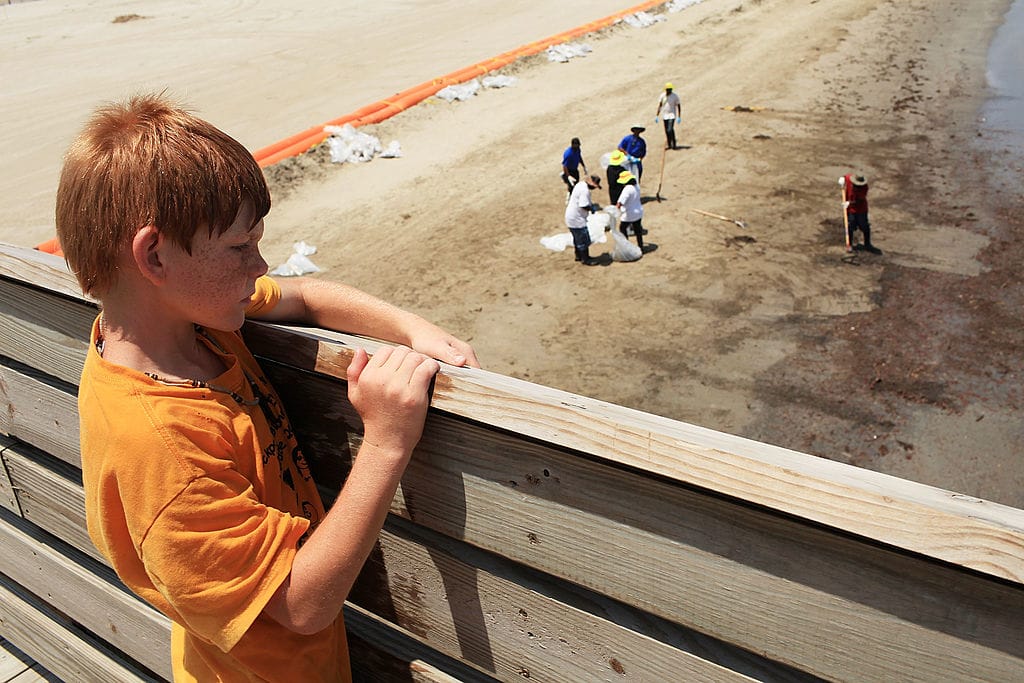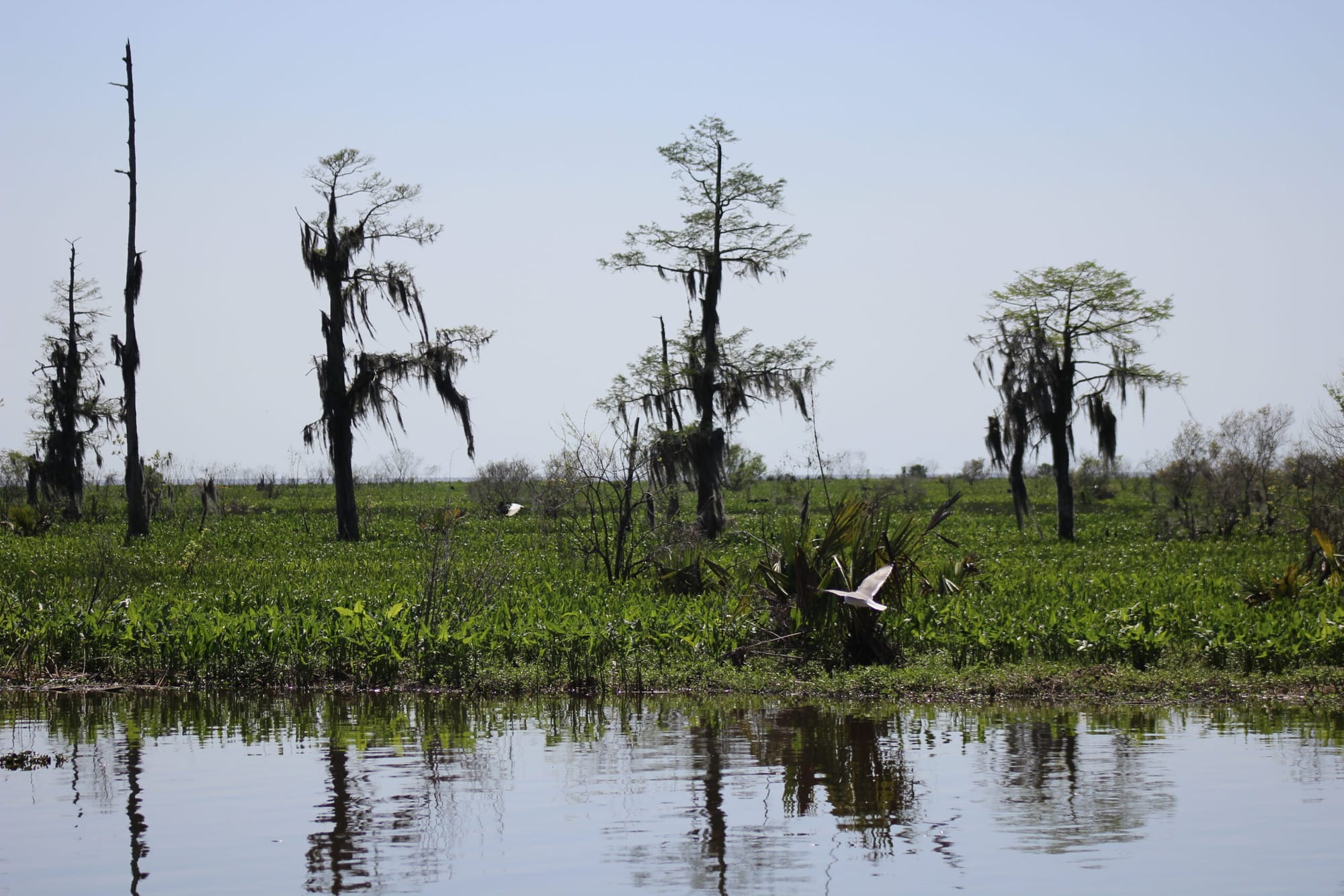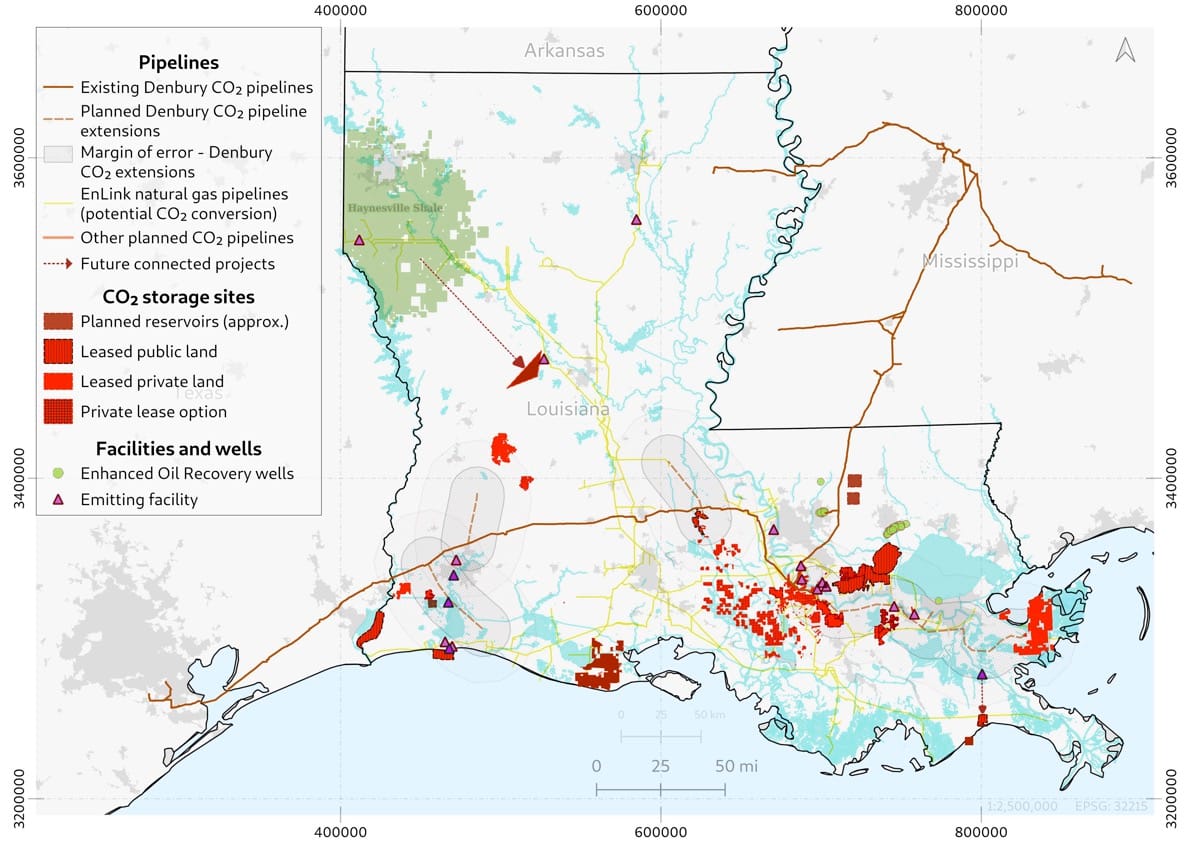A known risk: How carbon stored underground could find its way back into the atmosphere
Generous federal tax credits are driving the onrush of carbon capture and storage projects being proposed in the U.S. But like a game of whack-a-mole, there’s a chance the planet-warming emissions could seep back up into the atmosphere after they are injected underground.

Published in Inside Climate News, WWNO, Louisiana Illuminator and the Lens
Generous federal tax credits are driving the onrush of carbon capture and storage projects being proposed in the U.S. But like a game of whack-a-mole, there’s a chance the planet-warming emissions could seep back up into the atmosphere after they are injected underground.
How? Through any one of the thousands of abandoned oil and gas wells throughout the country. Louisiana alone has 4,500 abandoned wells and more than 21,000 inactive wells.
Nationwide, there could be as many as 3 million such wells. Despite the numerous “holes” in the ground, companies including Occidental Petroleum, Denbury and Blue Sky are rushing to purchase the underground spaces, generally deep underground, and sometimes in the spaces that once held oil and gas. So far, more than two dozen storage sites in Louisiana are publicly known, including the most controversial, under Lake Maurepas.

“Those wells are like straws in the marsh,” said Alex Kolker, Louisiana coastal geologist at the Louisiana Universities Marine Consortium. “It’s a conduit for carbon dioxide to reach the surface.”
Capturing climate-warming carbon dioxide from energy production, industrial processes or directly from the air is considered an important part of plans to keep global warming in check.
But critics worry about the implications of pumping millions of tons of the captured carbon underground. Worries include the potential for earthquakes from forcing the carbon underground, contamination of groundwater and the eventual leakage of that carbon back into the atmosphere.
The leakage problem has been studied extensively, including by the industry itself. Sue Hovorka, a research scientist at the University of Texas-Austin considered a pioneer of the geologic sequestration of carbon dioxide, says the risk is manageable with proper oversight and regulation. “It’s a stress point that has to be honored,” she said.
Government regulations for geologic sequestration of carbon, called Class VI permits, require careful analysis of all potential pathways for the carbon to escape, as well as regular monitoring and testing. Those regulations require identifying and mitigating all abandoned or inactive wells that are on that property. So far, however, only two such wells have been constructed in the United States.
Louisiana has applied for permission to regulate those wells, and the Environmental Protection Agency indicated earlier this year it would hand over that authority. A comment period on that decision ended Sept. 15.
The handoff to states adds another layer of concern for some critics of carbon capture.
“Louisiana regulatory agencies have a poor track record when it comes to enforcing permits and ensuring existing rules are followed,” says Logan Atkinson Burke, executive director of the Alliance for Affordable Energy. “This has been a documented failing at both the Department of Natural Resources and the Department of Environmental Quality and gives us little reason to believe that even the most stringent of guidelines will be followed.”
Patrick Courreges, spokesman for the Louisiana Department of Natural Resources, said he understands and “100%” agrees with the concerns that have been brought up around CCS projects and abandoned wells. For CCS companies to obtain their operating permits in Louisiana, their carbon injection zones will be surveyed and mapped out with subsurface tools to detect wellbores and freshwater aquifers, he said. Operators will be required to properly plug any wells that don’t pass DNR’s inspection.
Courreges said the state is using federal funding to develop a methodology to better determine leak factors and well integrity through DNR’s partnership with Louisiana State University. A preliminary report from that study found that 40% of the wells were leaking methane.
The carbon leakage problem is also well documented, including by the oil and gas industry itself, and by Hovorka in oil and gas fields across the nation. In 2016, a school in Wyoming had to be evacuated and the school had to be relocated for months when carbon dioxide — being used to force oil out of an adjacent oil field, under a less stringent Class II permit — seeped into a school-adjacent field.
“Abandoned wells are generally recognized as the highest risk of potential of CO2 release into the atmosphere during carbon capture and sequestration and the highest potential of impact to underground drinking water sources,” said Dominic DiGiulio, a former researcher with the U.S. Environmental Protection Agency and now environmental scientist and independent consultant.
Researchers with the Massachusetts Institute of Technology warned about the risks of underground CO2 leaking through orphaned and/or abandoned oil and gas wells more than 15 years ago.

Ideally, carbon emissions injected underground should remain trapped within the geological rock formations as long as there are no cracks, faults or wells through which they can escape, according to the MIT report.
Well bores that are not plugged or were plugged before the American Petroleum Institute implemented standardized plugging procedures in 1952 pose the greatest leak risks since operators weren’t mandated to use special additives to the cement used to plugged wells to prevent erosion, DiGiulo says.
But in many fields, Hovorka and a research team found no such leakage in the wells they examined, despite intentionally increasing the pressure of the underground CO2 in one study. “We were very optimistic we would find a leak problem.”
A study in the journal Nature found that 98% of the carbon stored underground is expected to remain there.
“This is not as terrible a problem as it first appears,” she said.
Industry knows the risks, however, and is first acquiring properties for underground storage that haven’t been used for oil or gas development, she says.
Hovorka says there will be leaks, but most will be readily apparent. “These are not widespread calamities.” Carbon dioxide coming out of the surface “whistles really loud,” and comes out cold. Those leaks will be handled “like plumbing problems,” she said.
But she emphasizes, though, that “regulators should not slack up.”
Floodlight depends on a community of readers like you who are committed to supporting nonprofit investigative journalism. Donate to see more stories like this one.




